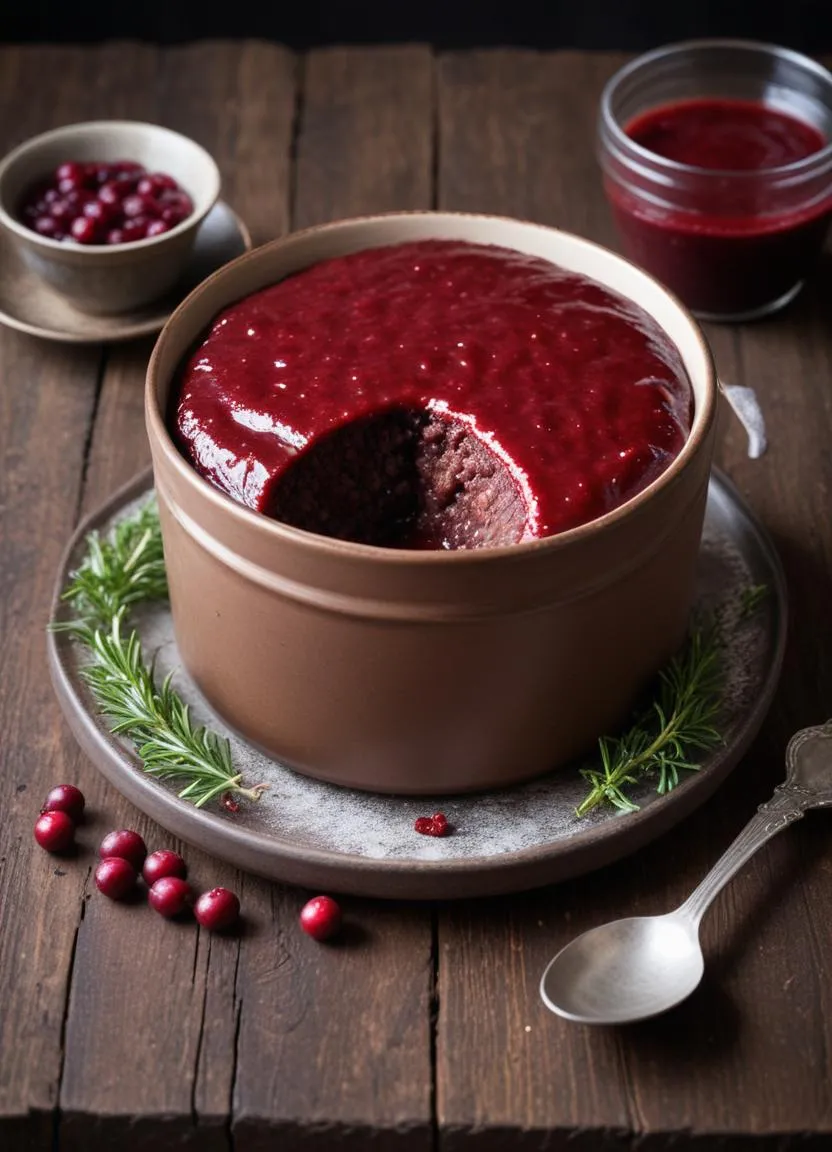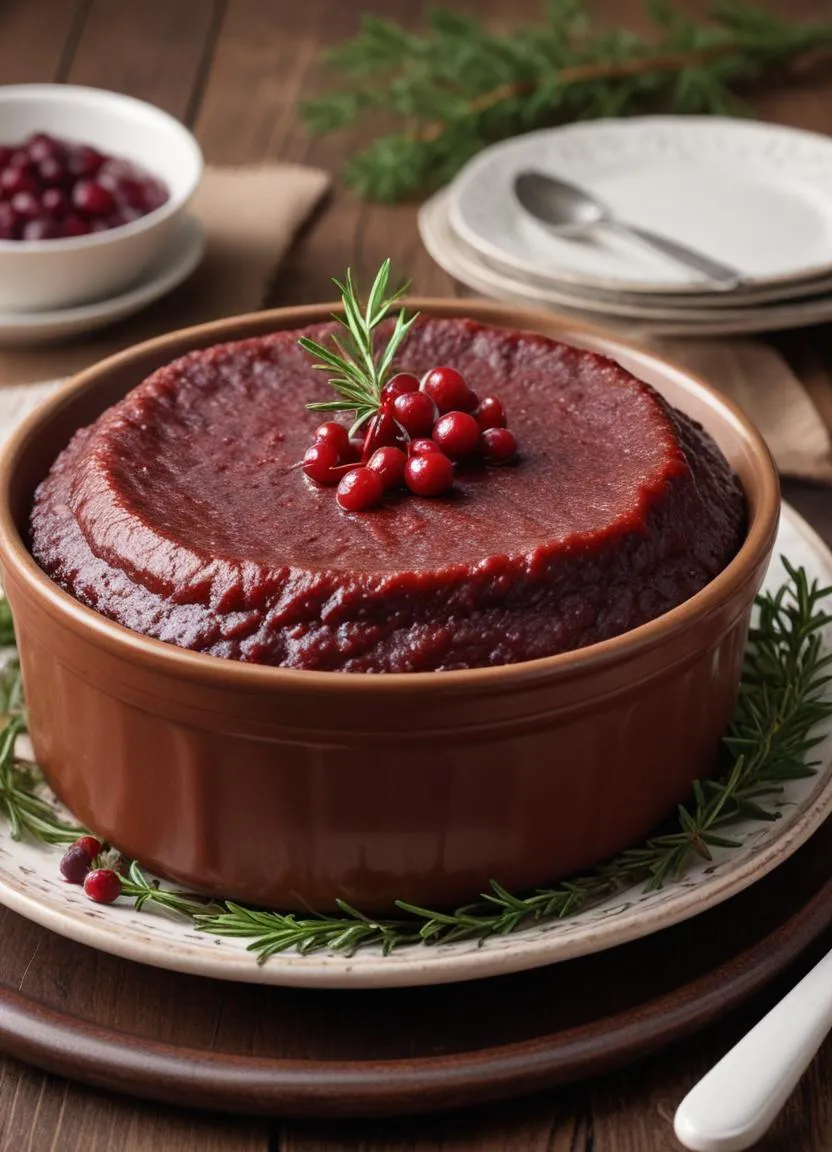Blodpudding is a traditional Swedish dish made from pig’s blood, rye flour, and warming spices like allspice and cloves. Known for its deep flavor and dark, dense texture, it reflects Sweden’s historical focus on resourcefulness and no-waste cooking. Typically served with lingonberry jam, crispy bacon, and a glass of cold milk, blodpudding offers a rich combination of sweet, savory, and tangy elements. High in iron and protein, it’s both nutritious and nostalgic—a humble meal that connects generations across Sweden.
Ingredients
- 1 liter fresh pig’s blood strained to remove any clots
- 400 ml whole milk or oat milk as an alternative
- 200 g rye flour barley or oat flour can be substituted
- 1 medium yellow onion, grated
- 2 tablespoons dark syrup molasses can also be used
- ½ teaspoon white pepper
- ½ teaspoon ground allspice
- ¼ teaspoon ground cloves
- ½ teaspoon dried marjoram optional
- Butter or oil for frying
Instructions
- Preheat the oven to 175°C (350°F). Grease a loaf pan or pudding mold lightly, and line it with parchment paper if preferred.

- Mix the blood and milk in a large bowl, stirring gently to combine. Be careful not to introduce too much air into the mixture.
- Add the grated onion, syrup, salt, and spices (white pepper, allspice, cloves, and marjoram if using). Stir in the flour gradually until the mixture becomes thick but still pourable.
- Pour the mixture into the prepared pan and cover it loosely with foil.
- Bake for 60-75 minutes, or until the pudding is firm and a skewer comes out clean when inserted into the center.
- Cool the pudding completely in the pan. Once cooled, refrigerate it overnight for the best texture.
- Slice the chilled pudding into 1 cm (½ inch) thick slices. Fry in butter over medium-high heat for 2-3 minutes per side, until crisp and golden brown.
Notes
Blodpudding: a humble Swedish classic with a rich past 🇸🇪
Deep in the heart of Swedish culinary tradition lies a dish that might surprise the unfamiliar — blodpudding. To most outsiders, the idea of cooking with blood sounds like something from another time. And in a way, it is. But for Swedes, this dense, dark loaf made from pig’s blood and grains is a cherished and time-tested comfort food, deeply woven into the culture. What sets blodpudding apart isn’t just its ingredients — it’s the story behind them. Rooted in frugality and respect for resources, this dish reflects the old-world wisdom of using everything available. No waste, no excess — just honest food. 🐷🌾
What sets blodpudding apart isn’t just its ingredients — it’s the story behind them. Rooted in frugality and respect for resources, this dish reflects the old-world wisdom of using everything available. No waste, no excess — just honest food. 🐷🌾
From survival to tradition: the origins of blodpudding 🕰️
Back when winters were harsh and storage options limited, Scandinavian households had to be creative. Nothing went unused. Animals were slaughtered in autumn, and every part was accounted for — including the blood. Rather than discarding it, families turned it into nourishing meals that could last through colder months. Blodpudding was born out of this necessity. But over time, it became more than just practical — it turned into a staple. These days, you’ll find it everywhere in Sweden, from home kitchens to school cafeterias. It’s still cooked much the same way it was centuries ago, which says a lot about how deeply it’s valued.What goes with blodpudding? pairing matters 🧂🥓🍓
Traditionally, Swedes don’t eat blodpudding on its own. The rich, slightly sweet flavor calls for contrast, and that’s where the side dishes come in. Popular pairings include:- Lingonberry jam – its tartness brings balance 🍓
- Fried bacon – salty and crispy, a perfect match 🥓
- Boiled potatoes – simple and filling 🥔
- Pickled red cabbage – bright and acidic 🥬
- Melted butter – drizzled on top for a richer taste 🧈
- A cold glass of milk – yes, really 🥛
More than just a meal: blodpudding as nutrition and nostalgia 💭💪
Blodpudding is a powerhouse when it comes to nutrition. It's high in iron and protein, which is why it was (and still is) often recommended for those needing a dietary boost, like kids or people with anemia. But ask anyone who grew up in Sweden, and they’ll likely tell you the same thing: this dish brings back memories. School lunches, weekday dinners, or grandma’s cooking — blodpudding isn’t just food, it’s part of growing up. It’s one of those dishes that connects generations, often without even trying.
More Swedish recipes
But ask anyone who grew up in Sweden, and they’ll likely tell you the same thing: this dish brings back memories. School lunches, weekday dinners, or grandma’s cooking — blodpudding isn’t just food, it’s part of growing up. It’s one of those dishes that connects generations, often without even trying.
More Swedish recipes